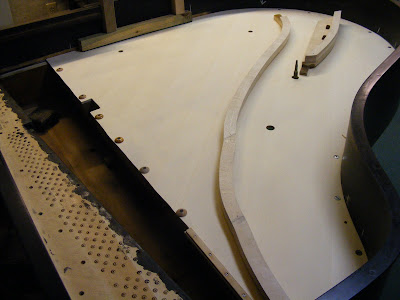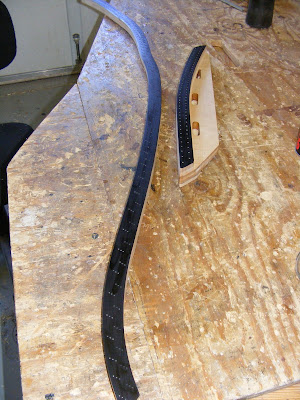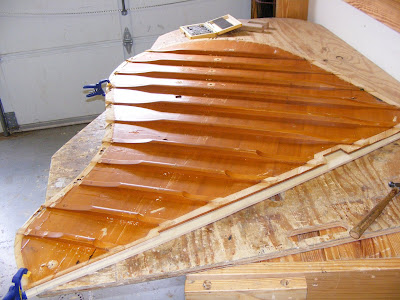




One of the most demanding jobs in rebuilding is setting the bearing on the new soundboard and bridge. Each rebuilder has his own formula for setting the amount of downward pressure that will be put on the soundboard. The soundboard is crowned upward, and the pressure of the strings are pressing downward. Creating the correct balance between these two opposing forces provides freedom for the soundboard to vibrate freely creating a long clear ring time for the vibrating string. This formula varies across the spectrum of the soundboard- Bass, tenor, mid section, treble, and high treble all require varying amounts of down bearing to achieve a good overall balance.
To set the bearing the bridge caps are set higher than needed, and are cut down to the desired dimension to achieve the desired bearing. The recapped bridges are dry fit onto the board, and the board is dry fit into the piano. The the plate is installed as set up with the pinblock installation. A notch is cut on the top of the bridge until the desired bearing is achieved at various sections of the bridge, When these cuts are completed, the board and bridge are removed, and the tops of the bridges are planed down to the height of the notches cut into the bridges. When this is completed, the bridge patterns are placed on the bridge, and the pin locations are transferred onto the bridge. The bridge and board are again dry fit, the plate is again installed, and the bearing is verified as desirable, and the pin locations drawn on the bridge top are checked for accuracy. When I am satisfied that every thing is where I want it, the plate, board and bridges are again removed from the piano, and I am ready to notch the bridges.
















































